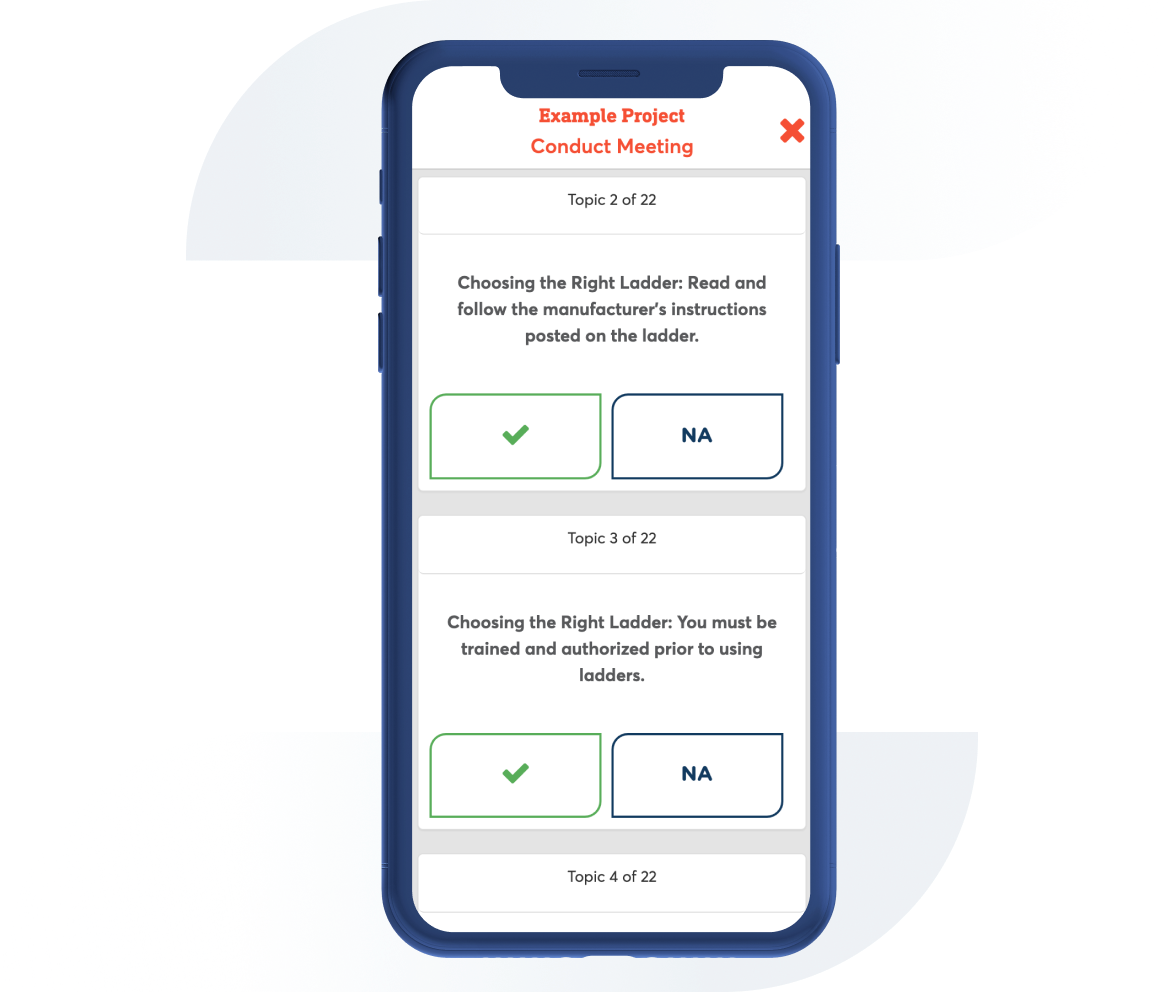Construction Eye Protection Toolbox Talk
Contributor: Safesite Jurisdiction: OSHA
Construction workers have one of the highest eye injury rates in the US. Review how to prevent injuries with proper eye protection and safe work practices.

1. 2000 eye injuries occur everyday at work in the US and construction workers have one of the highest eye injury rates. Particles of dust, metal, wood, slag, drywall, cement etc. are the most common source of eye injury to carpenters. Even “minor” eye injuries can cause life-long vision problems and suffering–a simple scratch from sawdust, cement, or drywall can cause corneal erosion that is constantly painful
2. Wearing the right type of eye protection equipment is the key to preventing most on-the-job eye injuries.
3. Worksite Tips: If your workplace has airborne dust or grit and a risk of flying particles or splashing chemicals, you need eye protection.
4. Worksite Tips: Regular glasses do not provide adequate protection, and contact lenses are never a substitute for safety gear.
5. Worksite Tips: Many types of eye protection exist, including designs that can be worn over prescription glasses.
6. Choosing Eyewear: Select the protective eyewear best suited to the job.
7. Choosing Eyewear: Glasses with impact-resistant lenses and side shields provide adequate protection for most types of work.
8. Choosing Eyewear: Flexible-fitting or cushion-fitting goggles fit easily over prescription glasses and provide front and side protection.
9. Choosing Eyewear: Prescription glasses that meet protective requirements of safety glasses are available
10. Choosing Eyewear: Special purpose eyewear, such as chemical or chipping goggles, provide maximum protection from fumes and flying debris.
11. Choosing Eyewear: Full face shields may be worn in addition to protective eyewear when it's necessary to protect from impact hazards.
12. Choosing Eyewear: Full face shields worn by themselves do not adequately protect from impact hazards.
13. Emergency Procedures: Know the locations of eyewash stations, face-washing units and first-aid equipment. Complete required training and know how to use emergency equipment. Report accidents to your supervisor and get medical help immediately.
14. Potential Eye Injuries Include: Dust, dirt, metal or wood chips entering the eye from activities such as chipping, grinding, sawing, hammering, the use of power tools or strong wind
15. Potential Eye Injuries Include: Chemical splashes from corrosive substances, hot liquids and solvents
16. Potential Eye Injuries Include: Radiant energy from welding, harmful rays from the use of lasers or other radiant light, as well as heat, glare, sparks, splash and flying particles
17. Write Comments or Remarks here:
Additional Comments

Can't find what you are looking for?
